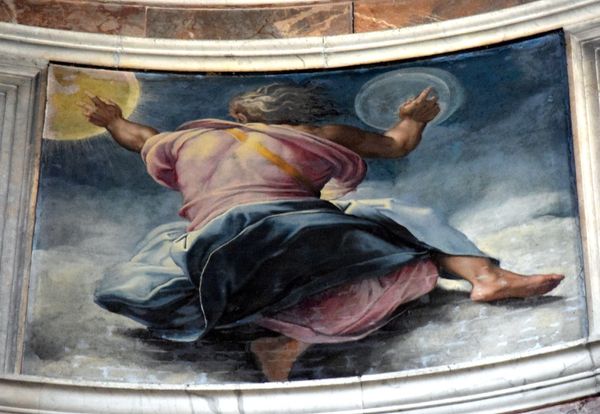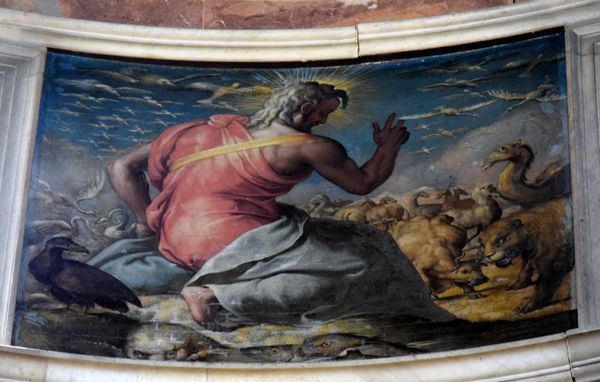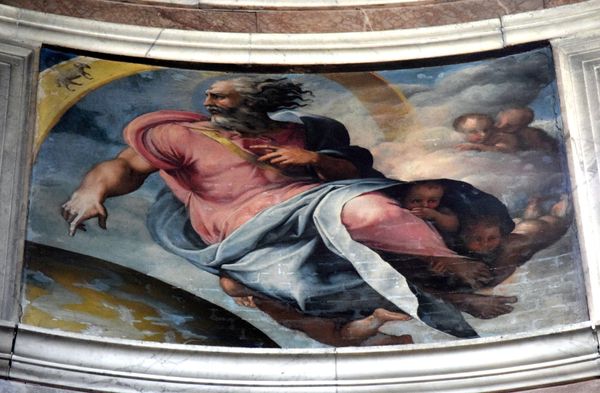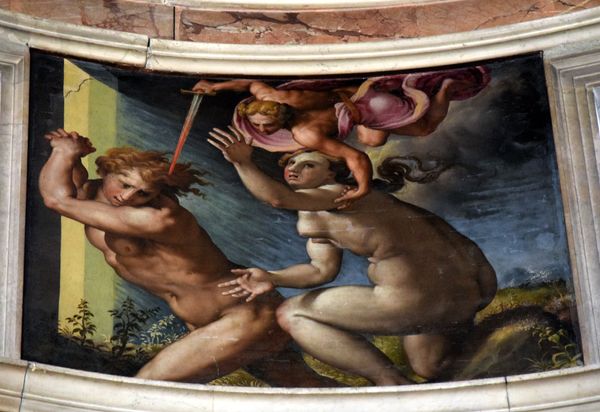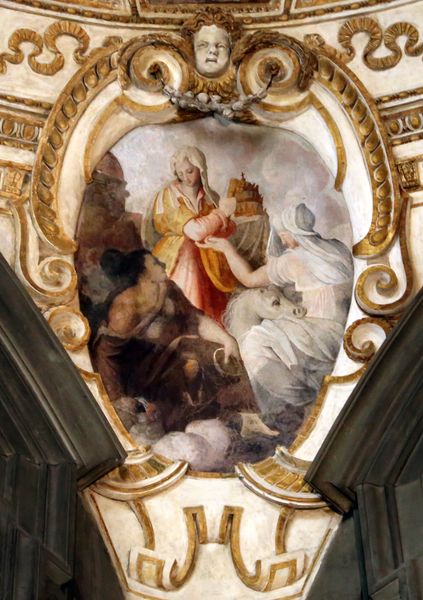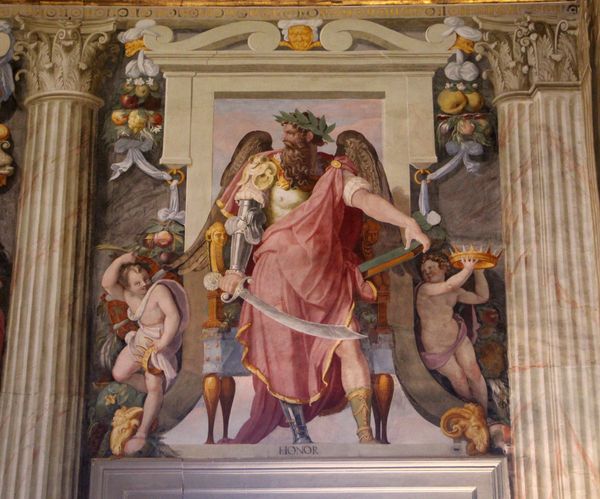
photography
#
gouache
#
acrylic
#
sculpture
#
painted
#
possibly oil pastel
#
photography
#
oil painting
#
underpainting
#
pastel chalk drawing
#
painting painterly
#
watercolor
Copyright: Public domain
Francesco Salviati, also known as "Cecchino", painted "Separation of Light from Darkness" in the 16th century. It’s an oil painting, so the artist was working with pigments ground in linseed or walnut oil. He would have carefully layered these to create the illusion of form and depth. Consider how this material, oil paint, and its application affects our perception. The ability to build up layers of color allowed the artist to create a range of tones and textures. The labor invested in grinding and mixing pigments, preparing the surface, and applying the paint, all contribute to the painting’s visual impact and cultural significance. Salviati would have used brushes of varying sizes and qualities to achieve the effects we see, and his skill in handling these tools is evident in the finished work. "Separation of Light from Darkness" offers us a glimpse into the modes of production and the social context of 16th-century art, reminding us that even the most ethereal visions are grounded in the materials, tools, and labor of their creation.
Comments
No comments
Be the first to comment and join the conversation on the ultimate creative platform.
